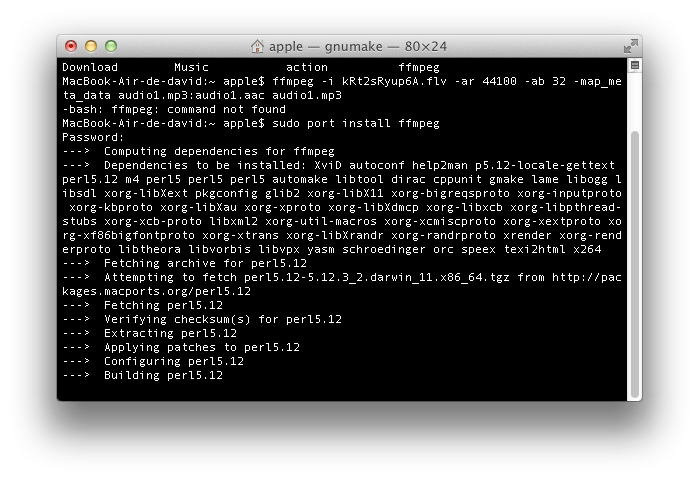

Then hit the return (enter) key to run the command. If you use Downloads for your web downloaded files, type the following: To change directory we use the command “cd” followed by the directory name to which we want to move. My files downloaded to my Downloads folder, so I am going to change to that directory. Now that we have Terminal open, we can start moving files around.ģ: change directories to see the ffmpeg filesįirst we need to change directories to where you downloaded the ffmpeg files and extracted the compressed zip file. When you change directories, the “~” will change to the name of your current directory. The “~” character is a special meaning for your user home directory probably /Users/your-username. The “~” is your current directory, or folder. The “command line” where you type will have a “prompt” which is probably something that looks like… When it opens, you’ll see a window you can type in and run commands. It doesn’t look like much, but it’s where all the real power is. In Launchpad, just type Terminal to find it. Open up Terminal, your Mac command line shell. Now we are going to use some Terminal command line stuff to put the files where your Mac can find them, on demand. You should see a new folder with three files in it. I downloaded to my Downloads directory, which is…Ĭheck where your browser saved the file, find it with Finder and extract it by double clicking it.



chmod, as sudo, the files to make them executable.move the files to /usr/local/bin, using sudo.If you already know your way around the command line and just want to get to it, here are the steps: This is a long post about how to install ffmpeg, but it’s thorough and doesn’t assume you know how to use Terminal or how to execute commands.Įvery step is outlined below with screenshots and some explanations of what the commands are, for the curious. Here are the steps to get ffmpeg downloaded, placed into a folder so your system can find them, and how to make them executable and usable. But, once you have it, it may not be clear how to get it working in your Mac. To convert video file formats on your Mac, you’re going to want a great piece of open source software called “ffmpeg”.


 0 kommentar(er)
0 kommentar(er)
